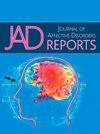Knowledge mapping of biofeedback for depression from 1999 to 2023: A bibliometric analysis
Q3 Psychology
引用次数: 0
Abstract
Background
Depression is a leading neuropsychiatric disorder causing disability worldwide. In recent years, biofeedback has been increasingly applied in the clinical treatment of depression. This study aims to explore the emerging trends and knowledge structure in biofeedback for depression.
Methods
The retrieval was conducted in the Science Citation Index-Expanded database from 1999 to 2023. The CiteSpace, VOSviewer, Microsoft Excel 365, and a bibliometric online platform were used to visualize bibliometric networks and conduct statistical analyses, exploring the relationships and contributions among countries/regions, institutions, funding agencies, journals, authors, and keywords.
Results
A total of 540 publications related to biofeedback for depression were included in this analysis, revealing a two-phase growth trend. From 1999 to 2013, there was steady but slow growth, with a compound annual growth rate of 7.49 %. This was followed by an explosive growth phase from 2014 onwards, with a 23.02 % annual growth rate, peaking at 71 publications in 2022. The United States ranked top in the number of publications, citations, and h-index, while Bodurka, J was the most prolific author. The University of London produced the highest number of publications. The most frequent keywords were "depression" and "biofeedback," with "anxiety," "chronic pain," and "therapy" also prominent, underscoring the potential of biofeedback in treating depression and its comorbidities.
Conclusion
Since 2010 and 2016, scientific interest in biofeedback for depression has experienced two significant growths. The United States leads in this field, with Germany and China following. However, the scope of biofeedback applications for depression treatment is still limited, and there is a lack of inter-institutional collaboration. Biofeedback is an important direction of non-invasive adjuvant options for depression treatment in clinical practice.
1999 - 2023年抑郁症生物反馈知识图谱:文献计量学分析
抑郁症是世界范围内导致残疾的主要神经精神疾病。近年来,生物反馈在抑郁症的临床治疗中得到越来越多的应用。本研究旨在探讨抑郁症生物反馈的新趋势和知识结构。方法在1999 ~ 2023年的Science Citation Index-Expanded数据库中进行检索。利用CiteSpace、VOSviewer、Microsoft Excel 365和文献计量在线平台将文献计量网络可视化并进行统计分析,探索国家/地区、机构、资助机构、期刊、作者和关键词之间的关系和贡献。结果共纳入540篇抑郁症生物反馈相关文献,呈两阶段增长趋势。1999 - 2013年,经济增长平稳但缓慢,年复合增长率为7.49%。随后从2014年开始进入爆炸性增长阶段,年增长率为23.02%,2022年达到71篇出版物的峰值。美国的论文发表量、引用量、h指数均居首位,而Bodurka J是最多产的作者。伦敦大学发表的出版物数量最多。最常见的关键词是“抑郁”和“生物反馈”,“焦虑”、“慢性疼痛”和“治疗”也很突出,强调了生物反馈在治疗抑郁症及其合并症方面的潜力。结论自2010年和2016年以来,对抑郁症生物反馈的科学兴趣经历了两次显著增长。美国在这一领域处于领先地位,德国和中国紧随其后。然而,生物反馈应用于抑郁症治疗的范围仍然有限,并且缺乏机构间的合作。生物反馈是临床治疗抑郁症非侵入性辅助选择的重要方向。
本文章由计算机程序翻译,如有差异,请以英文原文为准。
求助全文
约1分钟内获得全文
求助全文
来源期刊

Journal of Affective Disorders Reports
Psychology-Clinical Psychology
CiteScore
3.80
自引率
0.00%
发文量
137
审稿时长
134 days
 求助内容:
求助内容: 应助结果提醒方式:
应助结果提醒方式:


